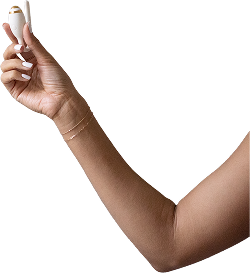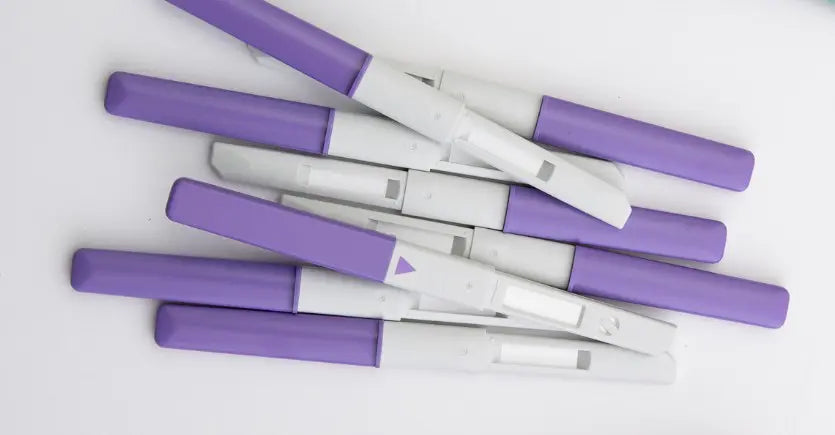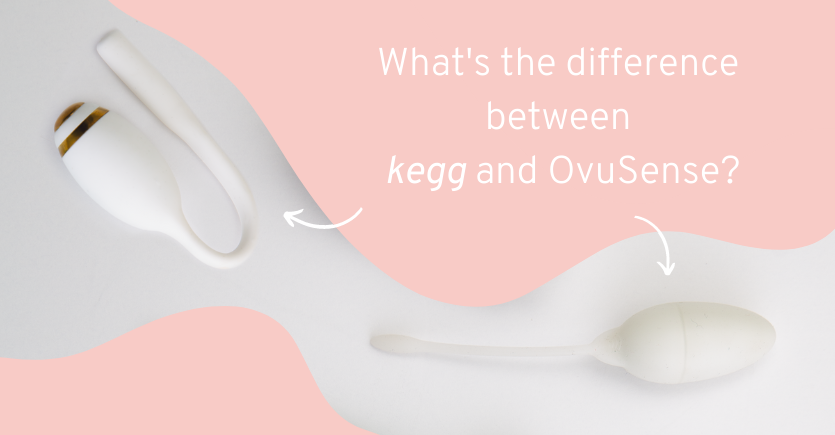At a Glance:
- The Luteinizing Hormone (LH) is produced by the pituitary gland and surges just before ovulation.
- You can track LH by urinating on a test stick near ovulation to predict when ovulation will occur.
- LH does not surge until days of the fertile window have passed. If waiting for an LH surge, users will miss opportune days to try to conceive
- LH can be misleading: there can be multiple LH surges in a cycle (often seen in PCOS), and urine concentration can impact accuracy in detecting the surge
- kegg is a fertility tracker that detects the changes in the cervical fluid to accurately display the full fertile window
- There is no messy urinating on sticks or worrying about urine concentration with kegg; kegg is inserted vaginally to take a 2 minute reading at a convenient timeframe for the user.
- With kegg, users can optimize their trying to conceive efforts by timing intercourse/insemination throughout the full fertile window
A common question we hear at kegg is: “Does kegg detect the fertile window by detecting LH?” Actually, no! Before we dive in, let’s take a closer look at LH and its role in fertility.
LH testing
Luteinizing Hormone, frequently referred to as LH, is a hormone produced by the pituitary gland. While there is always a low level of LH being secreted, this level surges midway through the cycle usually 24 to 36 hours before ovulation. Prior to this surge, estrogen begins to rise. This dramatic increase in estrogen eventually causes this LH surge, triggering the release of this follicle, or ovulation.
Women who choose to track their LH will typically begin checking their LH as they approach the midpoint of their cycle as they anticipate ovulation approaching. Women will typically test 1 to 2 times a day using an LH stick dipped into collected urine. The LH test results reveal a control line and a test line. The test instructions vary by LH test brand, but typically the test line needs to be as dark as or darker than the control line to constitute a “positive” value. Unfortunately urine concentration and collection timing can greatly impact the detection of the LH surge. In addition, the rise in LH is very brief, lasting only 12 to 24 hours. It can be challenging to detect if the LH hormone is rising or falling since this spike is so brief. In addition, many women have fairly high detectable levels of LH at baseline making it even more challenging to discern a spike in Luteinizing Hormone. LH strips are single use and therefore can produce a lot of waste.
Women who choose to track their LH will typically begin checking their LH as they approach the midpoint of their cycle as they anticipate ovulation approaching. Women will typically test 1 to 2 times a day using an LH stick dipped into collected urine. The LH test results reveal a control line and a test line. The test instructions vary by LH test brand, but typically the test line needs to be as dark as or darker than the control line to constitute a “positive” value. Unfortunately urine concentration and collection timing can greatly impact the detection of the LH surge. In addition, the rise in LH is very brief, lasting only 12 to 24 hours. It can be challenging to detect if the LH hormone is rising or falling since this spike is so brief. In addition, many women have fairly high detectable levels of LH at baseline making it even more challenging to discern a spike in Luteinizing Hormone. LH strips are single use and therefore can produce a lot of waste.
How does kegg work?
As the hormones fluctuate throughout a woman’s cycle, the electrolytes present in the cervical fluid also shift according to these hormonal fluctuations. As estrogen begins to rise, kegg detects this change reflected by the electrolytes in the cervical fluid. As a result, kegg data appears to decline into a “valley”. While kegg predicts the fertile window for the user with its intelligent algorithm displaying a 5-day fertile window depicted in green, users can also watch the real-time data unfold as they enter the fertile window and observe these descending values.
Why is this fertile window important?
As estrogen rises, the cervical mucus also changes, resulting in a more hospitable environment for supporting sperm. While the egg can only survive for about 24 hours after its release, this nourishing cervical mucus can maintain sperm for about 5 days, extending this window of time in which conception is possible to about 4 days before ovulation and 1 day post ovulation. kegg users benefit from being aware of the full duration of this fertile window thanks to the sophisticated changes that occur within the electrolytes in the cervical fluid. This results in the user being more aware of the days in which intercourse could lead to conception. This is vital when you are baby dreaming!

So, how does testing with kegg compare to LH testing?
In the chart below, notice how kegg identified this user’s fertile window in green from cycle day 14 through cycle day 18. It is astounding to see that the fertile window began 3 days before this surge in LH.

That means these 3 days before the surge are potentially fertile days, but had the user relied on LH testing alone, would not be aware of. While some users have a few days of descending values, others may see declining values for several days. This user timed intercourse on cycle day 15, the only intercourse during the fertile window, as her husband travels frequently for work.
As notated on cycle day 17, she reported an LH surge on this day. It appears she ovulated on cycle day 17 or 18. Had she waited for this surge, she would have missed the majority of her fertile window. More importantly, she would have missed her chance at conceiving this cycle as her husband was out of town during this LH surge. kegg gave her the foresight that she was already in this fertile window without having to wait for an LH surge.
As notated on cycle day 17, she reported an LH surge on this day. It appears she ovulated on cycle day 17 or 18. Had she waited for this surge, she would have missed the majority of her fertile window. More importantly, she would have missed her chance at conceiving this cycle as her husband was out of town during this LH surge. kegg gave her the foresight that she was already in this fertile window without having to wait for an LH surge.
This user conceived this cycle and has a ‘kegglet’ (or baby conceived using kegg) on the way!
Let’s now analyze another cycle from another user.
Let’s now analyze another cycle from another user.

In the chart above, notice that the LH surge did not occur until cycle day 12, yet the fertile window began on cycle day 8. This user would likely have missed several days of her fertile window had she not had kegg to indicate that she was in this fertile window well before the LH surge.

In the chart above, this kegg user never caught a positive LH test. She ovulated much earlier than her typical timeframe. If she had waited for a positive LH test she would have missed her fertile window shown here with the “fertile valley” cycle days 8-12.
What if I see multiple LH surges in my cycle?
Some women have multiple LH surges throughout their cycle. This is common during periods of stress and with certain conditions, such as Polycystic Ovarian Syndrome (PCOS).
In other cycles, women may not identify an LH surge at all. An LH surge does not indicate that ovulation will be successful. Alternatively, the lack of LH surge does not necessarily indicate ovulation will not occur this cycle.
In other cycles, women may not identify an LH surge at all. An LH surge does not indicate that ovulation will be successful. Alternatively, the lack of LH surge does not necessarily indicate ovulation will not occur this cycle.
If I use kegg, do I need to track my LH?
No, tracking LH is not necessary with kegg! Many users enjoy the additional information from other sources, such as tracking temperature, LH, and cervical mucus observations, however, this information does not impact kegg and is not necessary. kegg will do its job, predicting the fertile window, with just one brief reading per day, taken at approximately the same time daily.
Testing LH and tracking your fertile window with kegg provide valuable yet very different insights. While detecting an LH surge can be helpful for predicting impending ovulation, it does not provide insights into when the fertile window begins. kegg on the other hand detects changes in the electrolytes present in the cervical mucus, which allows it to predict the fertile window in advance.
Do you have an experience with kegg you would like to share? We would love to hear from you! Email us at hello@kegg.tech
Do you have an experience with kegg you would like to share? We would love to hear from you! Email us at hello@kegg.tech




